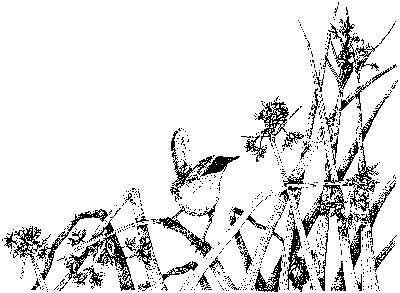


Living Lightly
![]()
By ANNE SCHELLMAN
The blockbuster movie of the summer may not have been An Inconvenient Truth although it did enjoy a long run at the State Theater. If you missed it, the premise of the movie is that global warming is true, scientific research proves it, and if we don’t act soon our planet will face detrimental changes in the near future.
When faced with all the overwhelming facts and fallacies, it’s easy to give up. Many people say Global Warming simply isn’t true, or that if it is, one person can’t make a difference. But history is rich with stories of people who achieved small things that brought about positive change.
U.S, legislators are working to propose new bills that will help to reduce carbon emissions and greenhouse gases. Aside from supporting legislation and voting, here are ideas for eliminating the causes of Global Warming on a personal basis.
Step 1: Awareness. Take an inventory of the house and garage. Make a list of the types of things your family owns that may be toxic to the environment. Document your buying patterns, what you buy and how often you make car trips.
Step 2: Replacement. It isn’t necessary to get a big garbage bag and throw everything away. The idea is to use what is there and replace it with something softer afterwards. Conserve energy by replacing burnt out light bulbs with energy-conserving ones. Use vinegar and baking soda as cleansers and scrubbers. Try out laundry detergents that don’t contain phosphorus, the number one cause of pollution in our water supply.
Step 3: Change. Change isn’t easy, but a great place to start is the grocery store. Try to shop locally and not buy from retailers who encourage the transport of goods for 1,000’s of miles. Also avoid buying items that are over-packaged with paper or plastic.
Step 4: Educate: Back in 1997 I met an amazing woman. Her name is Dr. Ida Bowers, and taking one of her classes put me on the path towards caring about the planet. Dr. Ida is a positive example for change and showed me that one person can make a difference. Being someone who leads by example is a great way to get others to reconsider the notions they may have about the environment.
Step 5: Research: Everyone has different interests and talents. Try out something new like using a compost pile or worm bin to recycle veggie scraps. Use a Solar box cooker to replace oven-cooking time, try building a straw bale shed instead of buying a wooden one. The possibilities will be endless once you find your niche.
Step 6: Join with others! Become more active! I encourage the donation of $25 per year to the Modesto Peace Life Center. There are also other organizations like The Center for a New American Dream (http://www.newdream.org/) that can guide you step-by-step on how to reduce your impact on the globe. There are 10 options for reducing your footprint on the planet that can actually be added up with their calculator to show your personal influence on the globe.
In the end, these small decisions can really add up. It may be difficult to see the impact, which is where a little faith becomes necessary, along with the confidence that others are doing their part. Together, I believe the little steps mentioned above can help to reduce Global Warming and create hope for the future.
![]()
What You Can Do
From: http://an-inconvenient-truth.com/
· Invest in “Green Power” for electricity in your home. See www.epa.gov/greenpower for more information.
Go to http://yosemite.epa.gov/oar/globalwarming.nsf/content/ActionsIndividual.htmlfor more information about what individuals can do to make a difference in the environment.
![]()
Rivers of Birds, Forests of Tules: Central Valley Nature & Culture in Season
By Lillian Vallee
28. A Tidings of Magpies
Language sometimes loses its usefulness because it no longer reflects the reality of those who use it; such may be the case with words indicating assemblies of animals or birds. These designations are known as terms of venery — words we may associate with sexual encounter but which historically have described the hunt or chase. We use terms of venery when we say covey of quail, brood of hens, or litter of pups, but other phrases such as a pride of lions, skulk of foxes, or sloth of bears may be less familiar.
Venereal terms describing birds can be particularly fetching: a bouquet of pheasants, an ostentation of peacocks, or a dule of doves are a few graceful examples. Figuring out the origins of many of these phrases and making new ones up are the subject of James Lipton’s delightful book, An Exaltation of Larks or, the Venereal Game. Lipton’s book reminds us of a time when people lived close to animals and were, by turns, delighted and exasperated by their antics. Venereal designations are often a key to animal behavior. Anyone who has ever watched crows surround a scrub jay nest in the spring can only nod solemnly at their term of venery: a murder of crows.
One of my favorite terms has always been a tidings of magpies because these showy members of the Corvid family of birds are seen universally as chatterers, bearers of news or messages. In her book on the origins of bird names, Diana Wells writes: “Magpies were said to be the only creatures that would not go into the ark, preferring to perch on the roof chattering while the world around it drowned.” Nonetheless, people believed magpies had links with the supernatural and possessed magical powers. “One for sorrow, two for mirth,/Three for a wedding, four for a birth….” begins an old European folk rhyme using the number of magpies to predict a bout of good or bad luck. “Some people still cross their fingers,” concludes Wells, “when they see a single magpie, just in case.”
I fell in love with magpies here in the Central Valley after reading a book called Straight with the Medicine and encountering a little magpie magic myself. In the chapter “Feathers,” the Washoe narrator discusses the power of feathers, declares that he likes magpie tail feathers best, and tells how he got his. He claims you will not get magpie feathers unless the magpies want you to have them and pull them out. And you can’t be too eager: “…when you are after their feathers, they know it, and you can’t get close to them….They are mean guys in some ways, and like to make you look dumb.”
The day after reading the narrative, I found an iridescent magpie feather in my backyard. With the quill end wrapped in buckskin! I have never solved this mystery. Another time, while taking a group of kids on a nature walk, I told them about magpie feathers and how magpies did not lose feathers but gave them to people who really needed them—you just had to maintain your dignity when asking. Two little girls were especially taken by this information and were desperate to have the feathers. It is impossible to exaggerate their excitement the following day when they told me that they had seen magpies, asked them calmly for feathers, and, sure enough, two were left behind.
People come from all over the world to see the Yellow-billed Magpie (Pica nuttalli), unique to the oak woodlands of Coast Range canyons and to the woodlands and orchards of the San Joaquin and Sacramento valleys. I have seen over 200 at one time in the La Loma Junior High schoolyard, and, until recently took them — hopping into sprinklers, galloping across a field, or balancing on cyclone fence — for granted as one flickering piece of the landscape. Adaptable magpies eat insects, acorns, carrion, grain and berries. They are the only species in North America that builds a domed nest. They will work on nests from December to March, and sometimes camouflage them inside of mistletoe clumps.
In their communal roosting sites, magpies are often accompanied by doves, and at least one group of Southern Valley Yokuts, the Tachi, had Dove and Magpie lineages. Members of the Magpie lineage often became spokesmen or criers, paid by chiefs to make announcements.
After attending a recent Magpie Monitoring Workshop at UC Davis with biologists Lynn Hansen and Richard Anderson, I have discovered we know almost nothing about the Yellow-billed Magpie. This is especially painful because the West Nile Virus has hit the species hard in the last two years, so hard, in fact, biologists may soon be lobbying to have them listed as a species of special concern and petitioning for habitat protection. Information, monitoring, and sample feathers (see http://www.magpiemonitor.org/for precautions) are desperately needed by UC Davis zoologists, so they are looking for people who can make systematic observations on daily walks, bike routes, etc.
The most impressive local monitor is Don McMillan, who divorced his car in 1997 and currently monitors magpies on his morning bicycle commute to work in Riverbank (fifty-five minutes each way, beginning at 5:05 a.m.!). “This task was made for me,” Don said recently. “It is a small way of accommodating the needs of the world. The monitoring allows me to contribute to the awareness that we may be losing something precious.” Don demonstrates that no matter how busy, each of us can contribute an eyeful of information about a bird whose magic we may not be appreciating fast enough.
Sources: Warren L. d’Azevedo, Straight with the Medicine; Herbert Clarke, An Introduction to Northern California Birds; Robert Heizer, ed., Handbook of North American Indians, Vol. 8; James Lipton, An Exaltation of Larks or, The Venereal Game; Diana Wells, 100 Birds and How They Got Their Names;

![]()
![]()

![]()
